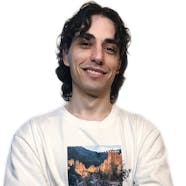TMS is a life-saving pill for any company that makes physical products. It's scary to think someone did without such platforms half a century ago. Yes, there were already fast enough ways to transfer data. Still, all this data had to be collected, stored, and processed manually, which was very long, expensive, and not always reliable. Now, we can automatically collect, process, and provide access to transportation data to any member of the company. It allows companies to be more efficient in creating and delivering products than ever before.
What is transportation management software?

Transportation Management System (TMS) is a software platform that helps companies improve product shipping processes from manufacturing to the end customer. Those improvements are achieved by optimizing the company's organization and processes, transparency vehicle tracking, route optimization, collection and analysis of data from vehicles and customer devices, and many other aspects that become visible, traceable, and predictable for you, rather than being hidden as before. Well, let's take a closer look at how TMS works and what it can do for a company.
How does transportation management software work?
It's not hard to guess how it all works at the hardware level. Each vehicle is equipped with a maximum number of sensors and a modem, which will send data from the sensors to the server with an installed TMS. This allows you to determine many parameters, from the vehicle's location and state of its components and transported goods to the weather conditions, road traffic, feedback from transportation hubs, and end customers.
For example, we use our Ariadna geocoder to determine geo-position in some projects, which perfectly does its job. And since it is open-source, it is much safer than many other similar solutions and can always be adapted to various scenarios. Like we developed the city map and animated cars with maximum accuracy using Ariadna in the cab service backend.
All this data is invaluable for data analytics specialists and software platforms that help collect and analyze this data to improve business processes. So companies that don't have and use this data can miss a lot. Let's look at the examples of how companies work with and without TMS.

Production
Everything begins with the internal transportation for production. So you need a whole logistics department to contact shippers and brokers, negotiate deliveries, make sure early arrangements are up-to-date, ensure the essential transport is available, figure out all the possible unexpected complications, and so on. It requires a lot of extra money to maintain such staff and additional time to conduct and coordinate all logistical operations manually.
Companies that use TMS have no such problems. Transportation asset management software helps get a complete picture of the vehicle's availability, load, and other data. This data is updated automatically, and it is available to you at any moment. You don't need to spend extra time or money on a whole staff of people who will check and monitor it all manually.
Carrier
Checking the condition of the vehicles requires a separate staff of specialists who will do regular inspections, which will make the vehicles unavailable for use every time. And if you don't own the vehicles and rent them, you can't even plan for these moments.
In both cases, using a TMS simplifies these processes. By constantly sending sensor data, you can anticipate when vehicle inspections and repairs will be necessary, significantly reducing downtime and sudden breakdowns. It also becomes possible to make the staff required for this much smaller. All of this saves the company a lot of time and money.
Customer service
Companies that do not use TMS are limited in providing good customer service. More precisely, they again need to have a whole staff of customer service people to provide information, troubleshoot problems, get feedback, and so on.
When a company uses a TMS, there is more than just a software platform to handle data from vendors, transportation, etc. The company also gets to create a platform for customers where they can get real-time information on order status, delivery, and other details. This again makes it possible to significantly reduce customer service staff and make their work much more efficient by automating the collection and analysis of important user data.
Delivery
Planning deliveries and transporting to retail distribution centers or end customers is highly complex. It also requires a large department of specialists to deal with a highly complex planning process, taking into account too many factors and constantly monitoring compliance with the plan.
Companies using TMS can calculate the most favorable routes to reduce fuel consumption, considering avoiding dangerous areas and getting feedback at all the transport hubs automatically. You don't need a whole department for complex planning, but just a few specialists, which will save the company a lot of money and significantly increase the efficiency of deliveries.
Why do you need transportation management software?
Well, it may seem that TMS is needed only for large companies, with a huge staff of people, incredibly complex processes, and the desire to reduce a huge amount of excess costs.
We at Mad Devs work with companies of all sizes and often develop web and mobile applications for them that are possible through TMS. And this is the choice of both large international companies and local startups making deliveries within the same city.
A great example is developed by us, Namba Taxi is a leading ride-hailing service in Bishkek, Kyrgyz Republic. We needed to develop many complex technological solutions for taxi service from scratch, create engaging user experiences, and have tools to improve them. It would not be possible without TMS, even though this service only works within Bishkek so far.
So TMS optimizes, automates, and improves a lot of processes for a company of any size, even if its budgets are not that big and there is no excessive spending at all. Let's take a look at the key improvements you can expect when you start using a TMS.
Key benefits
- Customer experience. The customer experience will improve many times over. Users will get answers to any questions they have without your direct involvement. At any time, they can log in to the app and get comprehensive information on their order or package status.
- Company organization. You'll need far fewer specialists to run your company efficiently. What's more, some processes will not require direct involvement at all. You'll save money and time without sacrificing quality.
- Operations transparency. All transport and related operations will be transparent for each team member with appropriate access to the platform. A massive amount of data on the status and position of transport, the availability of suppliers and routes, and so on will be updated in real-time and available at any time, conveniently and understandably.
- Business analytics and scalability. You will be able to retrieve data from users, equipment, shipping hubs, and other logistic processes, and benefit from it in ways you would never extract manually. You'll be able to get a much deeper assessment and make much better planning for the long term, or find solutions much faster for emergencies.
- Caring for the staff and environment. You can take care of the environment by taking shorter routes and reducing fuel consumption and emissions. It will also help drivers get less tired, be more productive, and most importantly, stay focused longer. It prevents accidents that can lead to environmental disasters, especially when talking about shipping.
How to choose transportation management software?
Since TMS can help any company, it begs the question: what is the best management software? Is it worth trusting free transportation management software? Should we use open-source transportation management software? There is no universal answer. Given its characteristics, any of the above solutions may be the right one for each company.
At Mad Devs, we always advocate an individual approach in developing or offering products for a company. We always carefully study all aspects of its business processes and services to provide the best solution for its stable growth and efficiency scaling.
One of the popular services we have developed is the Convenient shuttle bus service called GoDee, mainly used in Ho Chi Minh City, Vietnam. It allows users to find a route, select the time, book a seat, and pay for the ride online. And all this would not be possible in a complicated Asian traffic system without using the right transportation management system and our excellent development experience.
Important steps for choosing the best transportation management system software for your company
Here are the steps you need to take to choose the right TMS for you. Often, companies neglect the first two steps, even though they are critical.
- A collection of information system requirements, in which the business customer must be involved. For example, this step determines whether you are suitable for using open-source transportation management software and whether you have enough functionality offered by free transportation management software. It also lets you know what level, specificity, and cost you should look for in a TMS. Result: a list of business requirements for the information system.
- Preliminary market analysis using reports from independent analytical agencies and other publicly available information. For example, you can take an in-depth consultation with us at Mad Devs, which will give you exactly the correct answer. Or you can use resources such as Gartner, which makes a transportation management software comparison according to various parameters. Result: an initial list of developers, approximately 5-7 companies.
- Requesting information from information system vendors and creating a final list of candidates. This is where your company representatives, with great knowledge of the company's processes, come in. Result: a list of about 3-4 companies.
- Learning about solutions. Here, involved are internal technical experts or external, unbiased technical experts who can evaluate the proposal from the technical side. Result: Solution presentations and demonstrations.
- Request for proposals. After viewing the presentations, an individual full-fledged commercial proposal is requested from the selected candidates. Result: obtaining proposals with budget estimates and project timeframes.
- Negotiating contract terms with suppliers and partners. All of them must be able to interact with the implemented solution without problems. Result: information for making an entire decision.
- Final selection. If the proposed solution suits you and all participants in your business on all counts, then the final best solution is made. Result: purchase of the product and start of the implementation process.
Summary
Well, as you may have realized, TMS is an incredibly powerful tool that does more than simplify logistics processes. A TMS allows you to improve customer relations, better work with suppliers, monitor your equipment more closely, get much more valuable data about a variety of processes, and make better decisions for your business, as well as for our planet as a whole.
And now you know how to choose the most suitable TMS for your tasks and budget to optimize and automate processes in your company. Also, you can always consult us at Mad Devs.












